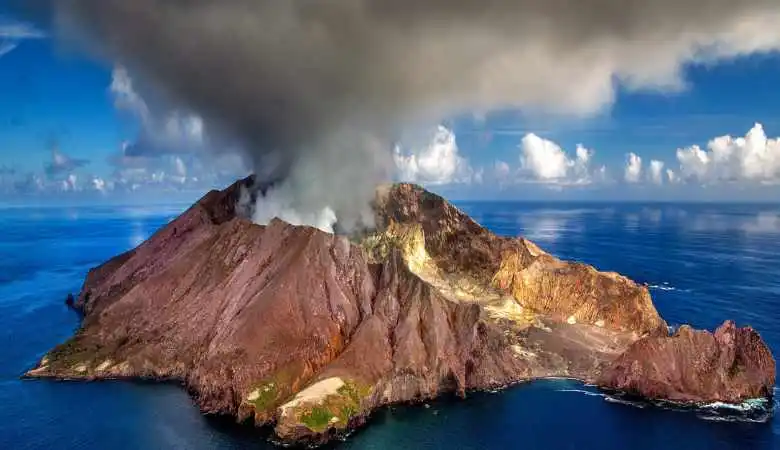Complex buildings built by a succession of eruptions and volcanoes are present all over the planet. Imbued with strangeness, they are popular with visitors in search of adventure and unforgettable experiences.
The Roman god of fire, Vulcan, gave his name to volcanoes. Made up of a magma chamber, a chimney – a place of transit for magma –a crater and lateral cracks contributing to their identity, volcanoes, extinct or active, are classified into several categories according to their morphology and their type of rash. Whether you are a mountaineer or a simple amateur, here are 10 of the most impressive volcanoes in the world.
BROMO, INDONESIA
Jewel of Southeast Asia, the volcano, located in eastern Java, rises to an altitude of 2,329 meters, and its crater, with a diameter of 800 meters, is what makes it famous. The smoke that blazes from its crater makes the sunrise memorable for its visitors. Be careful; it remains one of the most active in the world, and its last eruption dates back to December 2023.
MOOREA, FRENCH-POLYNESIA
Who hasn’t dreamed of Moorea and its turquoise waters? The sister island of Tahiti is an entirely volcanic land, making its landscapes abrupt, beyond lagoons and verdant forests.
LEMNOS, GREECE
The Greek island in the northeast Aegean Sea is home to a dormant volcano that was home to the forge of the god Hephaestus, according to Greek mythology. It impresses its visitors with its natural riches, including its easily identifiable red volcanic rocks.
FOUR MOUNTAINS ISLAND, ALASKA
This little-known archipelago is located in the Aleutian Islands in Alaska. Mount Cleveland, located at the centre of these six successive volcanoes, is the most impressive and the most active. The mountains are linked together by an underground corridor.
FORMICA LEO, THE MEETING
This crater is an integral part of the Piton de la Fournaise, located in the overseas department. It is possible to climb it easily, the weather being mild all year round. The lunar landscape makes it one of the activities popular with tourists.
MOUNT FUJI, JAPAN
Mount Fuji, whose last known eruption was in 1707, is considered a stratovolcano, characterized by a conical shape and steep profile. The landscape is breathtaking, and its ascent, although long, remains accessible to the general public two months a year, in July and August. The mountain is a popular destination because of the religious symbolism it carries. Mount Fuji has been listed as a UNESCO World Heritage Site since 2013.
KILIMANJARO, TANZANIA
Kilimanjaro is actually made up of three volcanoes, all peaking at over 3,900 meters. Uhuru Peak, at 5,891 meters above sea level, is the highest point in Africa and is home to an ice cap, contributing to a striking contrast. However, the decline in snowfall and deforestation are making this landscape fragile. Discovered in 1848 by Johannes Rebmann, it has since attracted the interest of mountaineers around the world.
QUALIBOU, SAINT LUCIA
Also called Soufrière de Sainte-Lucie, Qualibou is made up of a caldera – a landform similar to a volcanic crater – submerged by the Caribbean Sea, contributing to its fame. The coastline forms a rocky bay where hotel complexes flourish. It feels like paradise!
COTOPAXI, ECUADOR
This volcano, difficult to access due to its altitude (5,911 meters) and its violent eruptions – in 1877, several towns in the valley were destroyed – remains a destination of choice for the most adventurous. Its symmetrical shape represents a perfect cone, and its name means “clarity of the masses” in Quechua. Explosive type, with emission of ash or even lava, the volcano gave its name to the entire valley that surrounds it.
CONCEPCION, NICARAGUA
Rightly considered one of the best-formed volcanoes in Latin America, the Concepcion Volcano is located in Lake Nicaragua. Active and dangerous for the populations of the island of Ometepe, where it peaks at 1,700 meters above sea level, Concepcion remains a jewel preserved from mass tourism.


